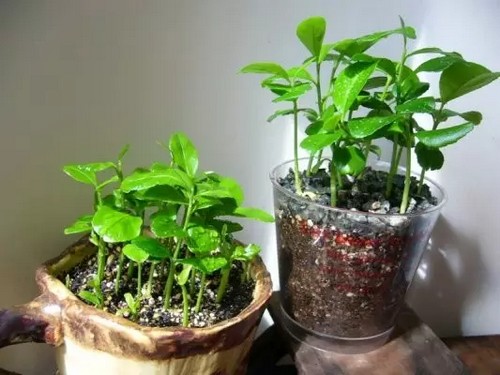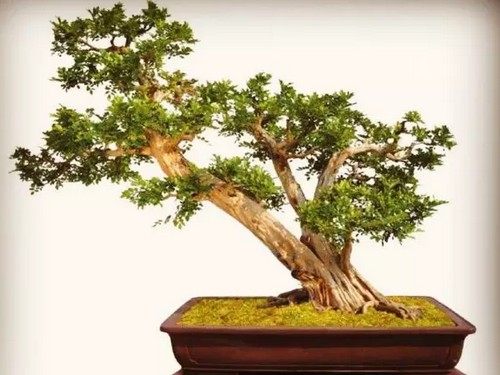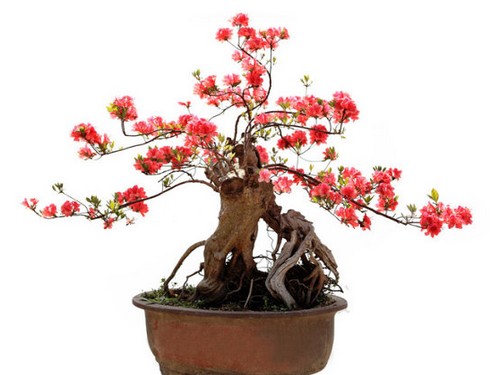Pot planting technique of Lemon
I think there should be a small potted plant next to every office worker's desk, whether you are anti-radiation or edifying your sentiment, it will always bring people a different mood. But most potted plants don't seem to have anything new except cactus and green pineapple. In fact, many fruit kernels can be turned into interesting potted plants.

From today on, don't even throw away the lemon seeds! Put a pot of cute lemons on your desk and desk. Little lemon seeds take root and sprout in the soil, and life is born before your eyes. Only need to eat the leftover lemon seeds for ultra-simple treatment, you can plant a pot of lemon! When he grows up, there will be a lot of lovely lemons. Specific operation steps:
1. The seeds of 3 lemons were soaked in water for 48 hours and softened.
2. Remove the outer shell of the package with a knife, exposing the yellow seeds inside.
3. Put the seeds between two paper towels and keep them moist, which will encourage you to stand out.
4. Put the paper towels in a closed plastic bag and hang them on the window that absorbs sunlight.
After a week or two, they began to sprout.
6. Put the seeds in the soil after germination.
7. Fill in the beautiful decoration and you are done.
It's easy to start, but first you have to finish eating a lemon.
Lemon is a small evergreen tree of the genus Citrus of Rutaceae. Leaf blade small, long oval, leaf margin serrulate. Flowers are solitary, blooming all the year round and full of fragrance. The fruit is oval or ovate and ripens in autumn and winter. The peel is yellow, the pulp is very sour and fragrant, the fruit juice is citric acid, and the peel can extract lemon oil.
Lemon pot technology mainly includes the following points:
Raising seedlings and pots: the time of pots and pots can be changed after autumn and early spring, and can be flexibly mastered according to the local climate.
Light and temperature: lemon is a light-loving plant, but if the sun is too strong, it will have poor growth and development. Generally, at noon, the annual average temperature for plant replacement is more than 15 ℃, and the optimum growth temperature is 23 ℃ to 29 ℃. If the plant stops growing at more than 35 ℃, it will be damaged by freezing at-2 ℃. Lemons generally do not need to cool down in summer, enter the room before Frosts Descent and leave the room after Qingming Festival, which can survive the winter safely.
Watering and fertilization: lemons need more water in their growth and development, but too much water is not easy to rot their roots. Generally speaking, spring is the time for shoots to spread leaves, pregnant buds to blossom, and appropriate watering. The summer light is strong, the temperature is high, needs more water. However, it should be timely and appropriate, otherwise it will cause fruit drop. Autumn is the period of shoot growth and rapid fruit expansion, so there must be sufficient water. Late autumn and winter are the period of flower bud differentiation, while the basin soil is dry. Lemon prefer fertilizer, in addition to the basin, change the basin to apply sufficient base fertilizer, the growth period should adhere to the principle of thin fertilizer and frequent application. The times and amount of fertilization should be determined according to the growth and phenological period. For example, it is better to apply liquid fertilizer to fully fermented cake fertilizer and water, and the ratio of cake to water is 1VR 200. The soil in the north is slightly alkaline, so ferrous sulfate can be added to the fertilizer solution to form a slightly acidic nutrient solution.
Pruning: pruning is generally divided into winter shears and summer shears. Winter shearing should be based on the principle of "cutting density and keeping thinning, getting rid of weak and strong", cutting off withered branches, cutting weak branches and overgrown branches without the effect of initial space. Summer pruning mainly truncates the overlong branches on the fruitless tree, erases the summer shoots on the fruiting tree, and shortens the declining branches in the middle and upper part of the crown. Lemon for promoting flower and protecting fruit is the tree species that blossom and bear fruit in the four seasons, while the potted plants in the north mostly blossom and bear fruit in spring. Therefore, it is necessary to control the water after the autumn shoot stops growing. Wait for both sides of the leaves to begin to roll, and then moderate watering to promote flower bud differentiation. Pay attention to fertilization in the basin and foliar spraying to cultivate robust fruiting mother branches.
The main measures to protect fruit are: first, to strengthen the supply of fertilizer and water, to accumulate nutrients; second, to carry out artificial pollination; third, to thinning flowers and fruits. Lemon fruit is large and needs more nutrients, with a normal leaf-fruit ratio of 30 to 40:1. According to the principle of removing the weak, staying strong and evenly distributed, first remove too many and too dense buds; then remove part of the fruit when the young fruit is 1cm in size; finally, after the physiological fruit drop, the fruit is determined according to the ratio of leaf to fruit. It can also leave a weak branch and a strong branch with only one fruit.
Time: 2019-05-25 Click:
- Prev

Cultivation techniques of Jiuli incense bonsai
Jiuli incense trees are graceful, the branches are vigorous and powerful, the four seasons are evergreen, the flowers are white and have a strong aroma, it is an excellent bonsai material. Jiuli incense bonsai is elegant in posture and can be enjoyed all the year round. Jiuli incense can be planted in both soil and pot in South China, and it is also a good material for making bonsai in the Yangtze River Basin and its north.
- Next

Key points of bonsai cultivation in Yingshanhong
Although the sketch bonsai can not be magnificent compared with large-scale bonsai, but it should be highly realistic, delicate and sophisticated, exquisite and elegant, while the sketch bonsai is more than outstanding. And the difficulty is much higher than that of large bonsai! Therefore, from the very beginning, the bonsai decided that it was correct to use the small metaphor as the big direction.
Related
- Fuxing push coffee new agricultural production and marketing class: lack of small-scale processing plants
- Jujube rice field leisure farm deep ploughing Yilan for five years to create a space for organic food and play
- Nongyu Farm-A trial of organic papaya for brave women with advanced technology
- Four points for attention in the prevention and control of diseases and insect pests of edible fungi
- How to add nutrient solution to Edible Fungi
- Is there any good way to control edible fungus mites?
- Open Inoculation Technology of Edible Fungi
- Is there any clever way to use fertilizer for edible fungus in winter?
- What agents are used to kill the pathogens of edible fungi in the mushroom shed?
- Rapid drying of Edible Fungi

